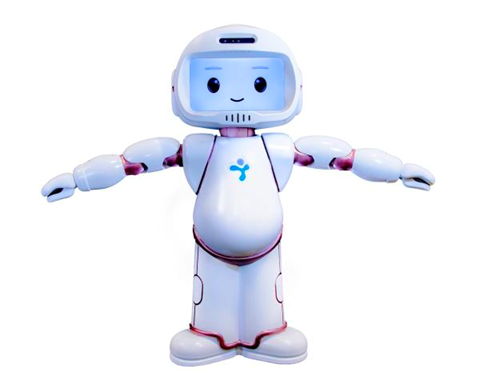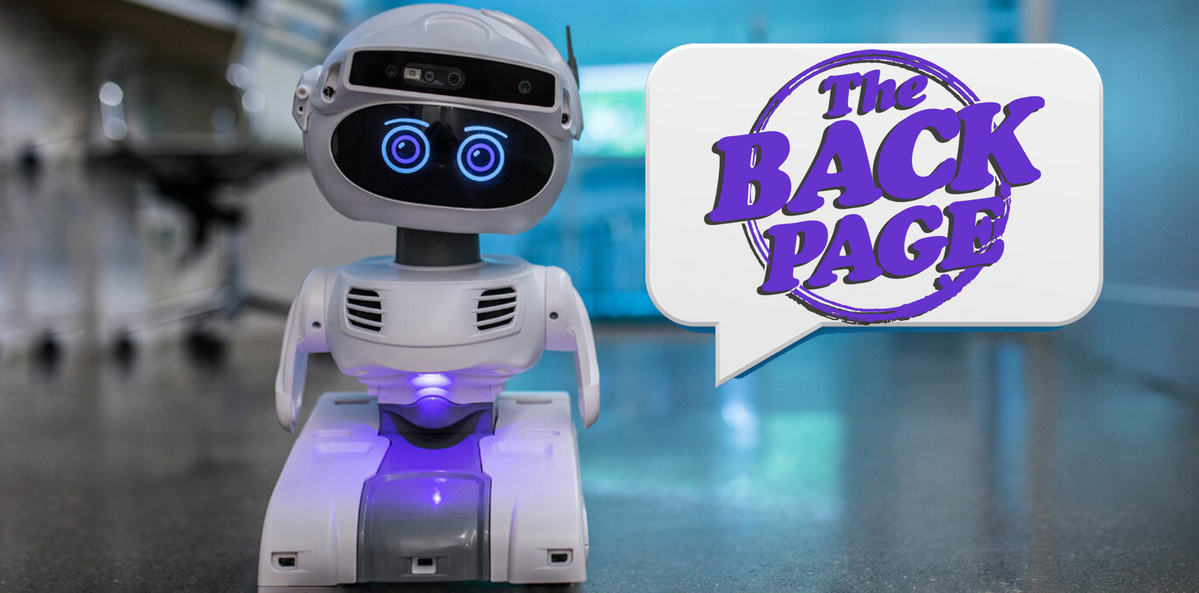When sending automata to whip up wellbeing at work, remember to manage expectations.
Your Back Page scribbler is a confessed robot fan.
A misspent youth watching Lost in Space and Doctor Who on the cathode tube instead of practising the recorder and doing my homework is most likely to blame.
I mean, why bother honing those skills yourself when in a decade or so a robot will be able to all those things for you?
Disappointingly, the future didn’t pan out in quite the way the TV scriptwriters of the 1960s imagined it might. While robots have indeed replaced human labour and acuity in countless tasks, many humanoids are still required to trade their meagre abilities for paid employment.
But despair not fellow toilers: mechanical help is now at hand to make those dreary workdays more tolerable in the shape of the “robot wellbeing coach”.
As dystopian as that sounds, researchers really have run experiments involving robots interacting with workers on the job to assess how well, or not, the machines might perform in boosting employee morale.
Presenting their findings at the International Conference on Human-Robot Interaction (not making that up), scientists from the UK’s Cambridge University detailed the performance of two different types of robotic wellbeing coaches when interacting with 26 tech-company workers.
Over the course of four weeks, the employees attended weekly wellbeing sessions led by the two robots. Both robots spoke the same script, had the same voice, and used the same facial expressions.
What the researchers found was that one robot, called Misty, (still not making this up, that’s her in our main picture above) was more was more effective than the other in boosting mental health.
And the reason for that? Being smaller, at 35cm tall, and limbless, it looked cuter than its wellbeing rival, called QT, which was taller (90cm) and much more humanoid in appearance:

According to the scientists, the more human-like QT inspired higher expectations from employees, which left them disappointed when they found out that it couldn’t talk to like a real person.
“We programmed the robots with a script, but participants were hoping there would be more interactivity,” study co-author Hartice Gunes said in a media release, adding that the capacity to program a robot to have natural conversational abilities was still a bridge too far for the AI boffins.
“The robot can serve as a physical reminder to commit to the practice of wellbeing exercises,” Gunes said. “And just saying things out loud, even to a robot, can be helpful when you’re trying to improve mental wellbeing.”
But only if it’s a cute one, like Misty.
You can boost the wellbeing of penny@medicalrepublic.com.au by sending her your story tips.


